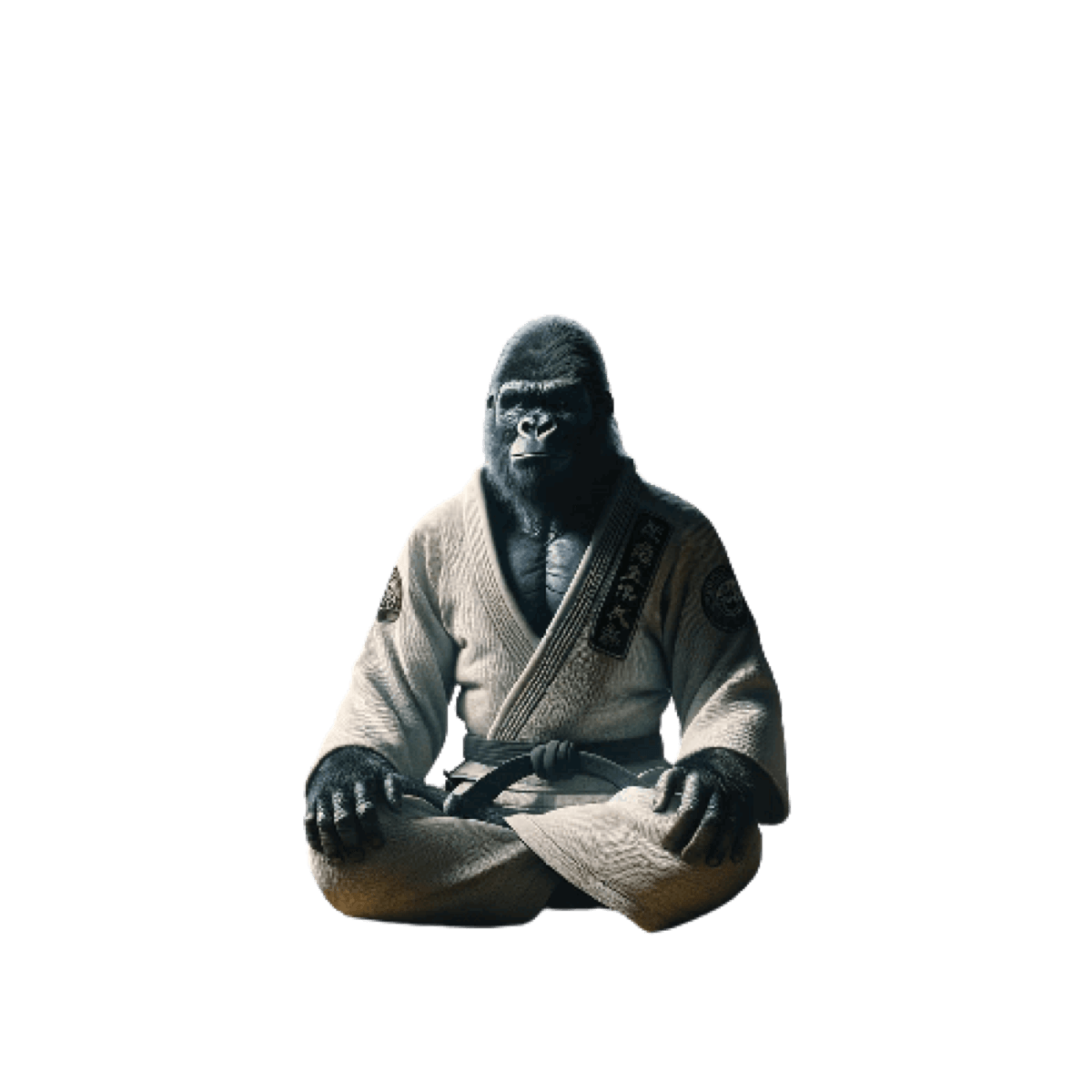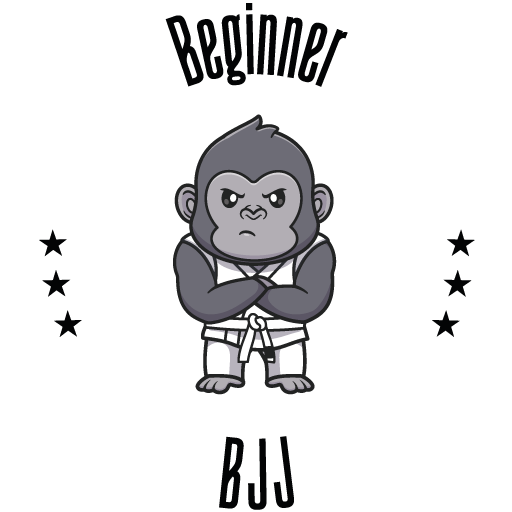Menu
Close
Comprehensive BJJ glossary for beginners
This A-Z guide covers the fundamental terms you need to start your BJJ journey.
Welcome to our comprehensive Brazilian Jiu-Jitsu (BJJ) glossary for beginners. As a novice in BJJ, you’ll quickly discover that this martial art has its unique language filled with various terms and phrases. Understanding BJJ terminology is crucial to your journey, whether it’s the names of techniques, positions, or principles.
Our BJJ glossary aims to demystify these terms and offer clear, concise definitions, making your learning process easier and more enjoyable. Think of this glossary as a helpful companion that you can refer to whenever you encounter a term you’re unfamiliar with during training or competition.
By mastering the language of BJJ, you can better grasp the techniques, communicate effectively with your instructors and peers, and deeply immerse yourself in this fascinating world.
Whether you’re a fresh beginner or an enthusiast looking to solidify your understanding, this BJJ glossary is an invaluable resource. Let’s delve into the rich language of Brazilian Jiu-Jitsu and enhance your BJJ journey.

Understanding BJJ terminology
The Importance of terminology in BJJ
Brazilian Jiu-Jitsu, much like any other specialized field, has a unique vocabulary that could seem like a foreign language to beginners. This unique terminology helps create a common language among practitioners, allowing for effective and efficient communication.
Knowing the specific terms used in BJJ helps you understand instructions better and fosters a sense of belonging and camaraderie within the BJJ community.
Whether understanding the difference between a ‘gi’ and ‘no-gi’, the meaning of ‘guard’, or what a ‘triangle choke’ entails, each term holds significance. By grasping these terms, you can streamline your training, better comprehend techniques, and actively participate in discussions, enhancing your overall BJJ experience.
Brief overview of Portuguese terms used in BJJ
Given the Brazilian roots of Jiu-Jitsu, it’s no surprise that many terms and phrases used in the sport are in Portuguese. From basic commands like “Lute” (Fight) and “Parou” (Stop) to naming various techniques and positions such as “Passagem de Guarda” (Guard Pass) and “Montada” (Mount), Portuguese language has a substantial influence on BJJ terminology.
Recognizing and understanding these Portuguese terms will not only aid your technical progress but also help you appreciate the rich cultural history of the sport. Over time, these terms will become second nature, making your journey in Brazilian Jiu-Jitsu more fulfilling and authentic.
BJJ glossary
This section has compiled a comprehensive list of some of the most commonly used BJJ terms and their definitions to serve as a handy reference guide for beginners. Let’s dive into the world of Brazilian Jiu-Jitsu terminology:
Americana An Americana, also known as a keylock or a figure-four armlock in catch wrestling, is a common armlock in BJJ that targets the opponent’s shoulder.
Berimbolo A Berimbolo is a sweeping technique that involves inverting and spinning under your opponent to take their back.
Closed Guard This is a defensive position where the practitioner on the bottom wraps their legs around their opponent’s waist while keeping their feet crossed.
De La Riva Guard is A type of open guard with one of your legs wrapped around your opponent’s leg, named after the legendary Ricardo De La Riva.
Ezekiel Choke A type of chokehold that utilizes the sleeve of the gi, named after Ezequiel Paraguassu, a judo practitioner.
Full Mount A dominant position where you sit on your opponent’s chest, with your knees close to their armpits.
Guard The Guard is a fundamental position in BJJ where the practitioner on the bottom uses their legs to control and defend against their opponent.
Half Guard Half Guard is a defensive position where the bottom practitioner traps one of their opponent’s legs between their own.
Ippon A Japanese term used in judo to denote an entire point that immediately ends the match. While not as commonly used in BJJ, it’s sometimes used to describe a perfect technique or throw.
Jiu-Jitsu A martial art, combat sport, and self-defence system that focuses on grappling and ground fighting.
Kimura A shoulder lock submission named after Masahiko Kimura, a judoka who famously used it to defeat Helio Gracie.
Lasso Guard A type of guard where you wrap your leg around your opponent’s arm, using your foot to hook behind their back.
Mount Also known as Full Mount, a dominant position where you sit astride your opponent’s chest.
No-Gi Refers to training or competing without a traditional gi. Instead, practitioners wear shorts and a rash guard.
Open Guard A type of guard where your legs are not wrapped around your opponent. Instead, they are used to control the opponent from a distance.
Pass Refers to passing your opponent’s guard to achieve a more dominant position.
Quarter Guard A type of half guard where only a quarter of your opponent’s body is trapped, typically from the knee down.
Rear-Naked Choke A chokehold is applied from an opponent’s back and is considered one of the most effective chokes in BJJ.
Submission A technique that forces an opponent to tap out due to pain or fear of injury.
Takedown A technique used to take an opponent from a standing position to the ground.
Underhook A grappling technique that involves placing your arm under your opponent’s arm and onto their back or shoulder.
V-guard is an open guard where you use your legs to control your opponent while your back is on the ground.
An x-guard is an open guard where one foot is on the opponent’s hip and the other hooks around the opponent’s knee.
Y-guard A type of guard where the legs form a Y shape. The open guard is a variation to keep the opponent at a distance.
Z-guard, Also known as a knee shield half guard, is used to create distance between you and your opponent.
Please note that this is not an exhaustive list, and the world of BJJ has many more terminologies to explore. With this glossary as your starting point, you’ll soon be fluent in BJJ lingo!
Common phrases in BJJ
Understanding the terminology used in Brazilian Jiu-Jitsu classes and tournaments is a key part of grasping the essence of the sport. Here are some commonly used phrases in BJJ:
“Oss/Osu” is a term borrowed from Japanese martial arts, often used to express respect or acknowledgement. In BJJ, it’s typically said at the beginning and end of class or in response to a coach’s instructions.
“Rolling” is used in BJJ to describe sparring on the ground. It’s an essential part of training, where techniques learned are applied in controlled combat.
“Tap Out” Tapping out is tapping your hand against your opponent or the mat to indicate surrender or submission, signalling your opponent to release their hold.
“Pulling Guard” refers to a grappler intentionally going to the ground, often by pulling the opponent down, into a guard position to start a roll.
“Drilling” refers to repeatedly performing a specific technique to improve efficiency and muscle memory.
“Gi” and “No-Gi” “Gi” refers to training or competing while wearing the traditional uniform. “No-Gi,” on the other hand, refers to training or competing without the traditional uniform. Instead, practitioners wear shorts and a rash guard.
“Shrimping” Shrimping is a fundamental movement in BJJ that helps create space between you and your opponent. It’s named after the motion that resembles a shrimp swimming backwards.
“Sweep” A sweep is a technique used to reverse the position from the guard, taking you from a bottom position to a top position.
“Position Before Submission” is a commonly taught principle in BJJ. It means that a practitioner should secure a dominant position before applying for a submission.
Learning these phrases will help you navigate the world of BJJ more comfortably and accelerate your understanding of the sport, enhancing your overall training experience.
Technical terms in BJJ
Brazilian Jiu-Jitsu (BJJ) sport is rich with technical terms and concepts critical to mastering the art. Understanding these terms will enhance your training experience and enable you to communicate effectively with your coaches and peers. Here are some commonly used technical terms in BJJ:
Guard is a fundamental term in BJJ and refers to a position where the practitioner is on their back, using their legs and hips to control an opponent who is in front of them. There are many types of guards, including closed guard, open guard, half guard, and butterfly guard, to name a few.
Mount Mount is a dominant position in BJJ where the practitioner sits on their opponent’s chest, with their legs on either side of the opponent’s torso. This position provides a high level of control and numerous submission opportunities.
Side Control Side control is a position where the practitioner is perpendicular to their opponent lying on their back. The practitioner controls the opponent by applying weight and pressure, making it difficult for the opponent to escape.
Rear Mount/Back Control Rear mount, also known as back control, is a dominant position where the practitioner is behind their opponent, controlling them with their legs and arms. This position provides a high number of submission options.
Submission A submission is a technique that forces the opponent to surrender or “tap out.” Submissions can be achieved through various methods, including chokes, joint locks, and strangles.
Takedown A takedown is a technique used to bring an opponent from a standing position to the ground. Takedowns are essential in BJJ and often determine who gains the initial dominant position in a match.
Pass/Passing the Guard: The guard is moving past the opponent’s legs (guard) to achieve a more dominant position, such as a mount or side control.
Escapes are techniques used to get out of an inferior or dangerous position, such as a mount or side control, and reset to a neutral or superior position.
As you continue your BJJ journey, you’ll learn and understand more technical terms and how they fit into the grand scheme of the art. The language of BJJ is vast and varied, and learning it is an exciting part of the journey.
Competition and grading terminology
BJJ language extends beyond the training mat to the grading system and the competition rules. Familiarity with these terms is essential for understanding the sport’s framework and progression. Here’s a closer look at the key terminology:
Belt Colors The BJJ belt system signifies a practitioner’s skill level, experience, and technical knowledge. The progression starts with a white belt (beginner), followed by blue, purple, brown, and black (advanced). Beyond the black belt, some additional degrees and belts represent lifelong commitment and mastery of BJJ.
Stripes are awarded to students to indicate progress within their current belt level. Usually, four stripes can be earned before the student is eligible for the next belt promotion.
Points In BJJ competitions, points are awarded based on the successful execution of specific techniques or achieving dominant positions. This scoring system encourages the athletes to be active and offensive.
Advantages are secondary points awarded in competition when a BJJ athlete almost completes a technique or action that usually scores points. Advantages can also be awarded for defensive actions. These can often be the deciding factor in close matches.
Weight Classes BJJ tournaments have various weight classes to ensure fair competition. The number and range of weight classes can vary depending on the event’s organisation.
Submission In a competition setting, a submission occurs when a competitor successfully applies a technique that causes their opponent to tap out, leading to an immediate win.
Gi and No-Gi Gi refers to competitions where athletes wear the traditional BJJ uniform, while No-Gi matches are performed in rash guards and shorts. The rules and techniques can vary significantly between these two styles.
Division, The division in a BJJ competition represents the grouping of competitors based on their belt level, weight class, age, and sometimes gender.
Understanding this competition and grading terminology helps to clarify the path of progression in BJJ and provides insights into the strategic elements of the sport. As a beginner, it’s essential to familiarise yourself with these terms as you immerse yourself in the world of BJJ.
FAQs about BJJ terminology
Why is Portuguese terminology used in BJJ?
Brazilian Jiu-Jitsu was developed in Brazil by the Gracie family, who adapted and evolved techniques they learned from Japanese Judo. Given this Brazilian heritage, Portuguese (the official language of Brazil) has remained the primary language for many terms used in BJJ, especially for moves and positions.
What does 'Gi' mean?
In BJJ, ‘Gi’ refers to the traditional uniform worn during training and competitions. It consists of a heavy cotton jacket, pants, and a belt that signifies the wearer’s rank. Some BJJ practices and competitions occur without the Gi, aptly named “No-Gi” BJJ.
What does 'tap out' mean?
To ‘tap out’ in BJJ means to submit to your opponent. This is typically done by tapping the mat, yourself, or your opponent with your hand or foot to signal that you concede due to a painful or potentially harmful position. Safety is paramount in BJJ, so when in doubt, tap out!
What does 'rolling' mean in BJJ?
‘Rolling’ is used in BJJ to describe live sparring or training. It’s a chance for students to apply techniques they’ve learned in a real-time, dynamic situation against a resisting partner. It’s one of the essential aspects of BJJ training.
What is a 'guard' in BJJ?
In BJJ, a ‘guard’ is a position where one person is on their back with their opponent between their legs. It is a unique feature of BJJ and is considered a defensive position from which many offensive techniques can be launched. There are many types of guards, including the closed guard, open guard, half guard, and spider guard, among others.
Knowledge is power, and when it comes to Brazilian Jiu-Jitsu, understanding the unique terminology used in the sport can profoundly enrich your learning experience. With this glossary, we’ve shed light on the most common phrases, technical terms, and competition jargon, helping you navigate the fascinating world of BJJ more effortlessly.
By familiarising yourself with this language, you’ll improve communication with fellow practitioners and coaches and deepen your understanding and appreciation of this intricate martial art.
Whether you’re just starting or continuing to expand your BJJ knowledge, keep this glossary handy as a valuable resource to illuminate your journey. And remember, BJJ is a vibrant and evolving discipline, so there may be terms or phrases we still need to cover.
Feel free to reach out if you encounter unfamiliar BJJ terminology or have questions. We support your learning process and make your BJJ journey as smooth and enjoyable as possible.
In the spirit of BJJ, we encourage continuous learning and shared growth. Bookmark this page, join our community for more insights and let’s keep the BJJ conversation flowing. Train smart, stay safe, and enjoy the roll!


